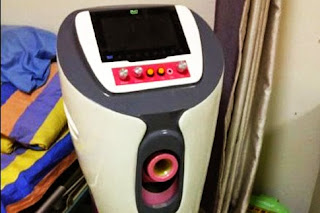taboo in a number of places the world
over but scientists seem to be making
the process easier.
A hospital in Nanjing, China now has an automatic
sperm extractor at its disposal.
So much
for a hands-free device, huh? Let’s dive
into the more interesting details.
This piece of technology comes with a
massage pipe that the user can adjust
to suit his height.
Upon setting the
desired amplitude, frequency and
temperature on the machine, the user is
good to go.
A small display on the top
is featured for those who like some
‘visual’ assistance.
Director of urology
department feels it’s just to have the
machine in the hospital considering
many individuals have issues retrieving
sperm by the old conventional methods.
Arguably, standing and delivering like
that in a room full of other men is likely
to make many individuals feel awkward.
It depends what sort of slant you put on
it, I suppose.








































